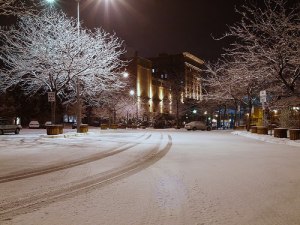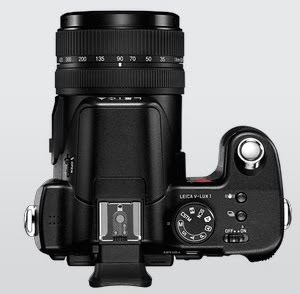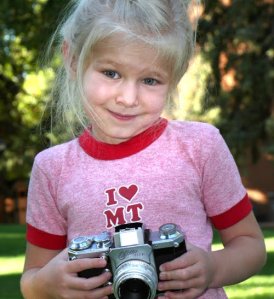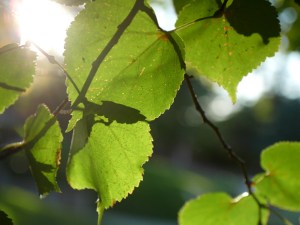Photography Training:Fuji X-E1 Hands-On Preview
Buffaloz Photography Training: Free Online Photography Tips, Tutorials, and Training
Photography Training: The Leica M3
I have owned my Leica M3 for over 23 years now. Just this last summer I took it out of the closet and started shooting with it. I am in love with it. It sat in my closet for over 10 years and now I am using it every week. If you want to add excitement to your photography, get one of these and put a few rolls of film through it. It’s addicitve. Anyhow, most newer photographers don’t know a lot about Leica’s or Film photography in general. If you want to add excitement to your work, shoot film.
Buffaloz Photography Training: Free Online Photography Tips, Training and Tutorials
A Simple Tip to Improve Your Photography: Change Your Perspective!
ISO in a Nutshell.
Have you ever wondered what ISO is? Well, after reading this post you should have a pretty good idea of how it works.
ISO has been around for a long time. It is a abreviation for International Standards Organization. In the old film days it meant the same thing as ASA. ISO traditionally measures film speed. The higher the number, the more sensitive the film was to light. So, ISO 400 is a more sensitive film than ISO 100. Since you are probably not using film anymore,ISO is now how a reference to how sensitive your cameras light sensor is to light. Most cameras have several ISO setting ranging from 100 to 1600.
Most of the time lower ISO’s are most desirable because they give you less noise in your photograph. However, choosing a higher ISO allows to you to use a smaller aperture or a faster shutter speed. There are times when a higher ISO setting is useful. If you are shooting in low light or if you are shooting action shots you might want to raise your ISO settings. Also, If you are using a really long lens, such as a 500mm, it might be wise to raise your ISO setting to help avoid camera shake.
If this is new to you it might be a good idea to do some tests. Go out and shoot the same scene in all of the ISO setting your camera offers. This way you can get a feeling for what the different ISO settings produce.
A few tips to get better photographs
Even in you are a pro photographer, there is always room to improve. So, pro or not, here are a few tips to get better shots.
1. Get down to your subject’s level. This applies to kids, pets, flowers, almost everything. Try a different angle to see how it looks.
2. Use flash outdoors. When taking photos of friends or family, use your pop -up flash. Believe me, your photos will look better. It will get rid of the harsh shadows.
3. Use a plain background when photographing people, pets, etc. There will be less distraction to take away from the subject.
4.Take a vertical shot. Most people get used to taking horizontal shots. Mix it up an bit and throw in an odd vertical.
5. Use the rule of thirds (if you don’t know what it is, I did a post on it, so go find it.). Better composition always helps a photo.
6. Shoot down. It adds a creative angle to the shot!(check out the photo below.)
Hope you enjoyed this. Let me know if you have any questions.
Looking for a new camera?
Things can get pretty confusing when looking for a new camera. There are a lot of options out there. You have to decide which system you want. Canon and Nikon rule the roost. Then you have to decide on the lenses you need. You have to decide what length of lens you want and the quality you want. Lots of decisions!
Well, here is what I do. I almost always buy a camera that has been out of a year or so. For example, I shoot with a Lumix DMC-L1. I love my camera. It has a Leica lens that is extremely sharp and it’s fun to shoot. I get a lot of complements on it also, not that it matters. My camera new would have been over $2,000. I bought it off ebay for less than $700.
So, If you are wanting a new camera, I suggest you buy a camera that is a year or so old. A great example of a camera that will work great for just about anyone is the Leica D-LUX 1. This camera has an awesome lens with a zoom from 35 to 420 mm lens( you won’t ever need another lens). It has a 10 mega-pixel sensor, and since it is a over a year old you can pick it if for around $800! New is was above $2,000! Plus you get to shoot with a Leica! I do need to admit that I am a leica buff so this post might be a little bias, but still, this camera is a steal!
How to Price Your Wonderful Photographs
I have been asked to give some information on how much to charge for photographs. This lesson is for Teri. Enjoy:)
There are several aspects to look at when figuring out pricing for photographs.
1. Look at your competition. If there is an excellent photographer in town and he is charging $35 for an 8×10, it makes no sense to charge $55. Usually you want to stay in the in same range. If you are just getting started, charge less. The problem is when you decide to raise your prices later on, it might alienate your customers. The way to combat this is to charge the same amount as the other photographers in your area and then give a discount. Here is how it works: Bob’s photo studio down the road from you is charging $35 for an 8×10. You need to be lower than he is because you are just starting out. So, what you do is charge $35 for an 8×10 and give a $10 off discount. Now your prints are selling for $25. As you move along in your business, you can take away the discount and you don’t have to raise prices. This way you don’t upset your customers.
2. The second way to price your photos is to consider your costs and time. Take into consideration the cost of your camera, money for gas, printing, studio costs (utilities, rent), part time employees, and all the other expenses that you will accrue over a year. Divide that by how many jobs you plan to have and this should give you the average amount you need to charge per job. Remember that you still need to be in the same ball park as your competition, but you should never be in a situation where you don’t make enough to live on.
These are the two best ways of figuring out prices that I have found. There are probably others, but these seem to always work. It is very hard to figure out pricing and sometimes it is trial and error until you find the groove. Remember to always take into consideration the quality of the work you do.
Another interesting tidbit: I’ve found that the higher the price, the easier the customers are to work with. If you are charging $300 to do a wedding (this is way too low from my point of view) you will get a $300 wedding. I you charge $2,000, you will get a $2,000 wedding. Not to pick on the poor ( hey, I’m poor right now) but that is just what I have found.
Thanks for checking out my site and if you have questions, let me know!
The photo below is for sale for 5 grand if anyone is interested. LOL!
The New Lumix DMC-GF1! Does it Compare to the Olympus E-P1? How About DSLR’s?


The price is supposed to be around $900 ( which kicks butt over the Olumpus E-p1) and is geared toward DSLR customers who don’t want the bulk of the bigger camera but still want the creativity,quality and performance.
I’m Freaked Out by my Camera! What is Aperture Priority?
Aperture priority, also known as Av or A on your camera, is a setting that most cameras have to allow you to choose a specific aperture while the camera selects a shutter speed to get the correct exposure. In manual mode you have to choose both aperture and shutter speed.
The main reason for using aperture-priority mode is so that you can control depth of field (I have a post on depth of field if you don’t know what it is. It is further down.). Aperture priority is useful in many situations. It is very handy in landscape photography when you want to have deep depth of field and everything in focus. Using f/22 is great for landscapes where you want everything in your picture in focus. In Av mode, all you have to do is set your aperture to f/22 and your camera will adjust to get the correct exposure. In low light situations you might need a tripod to steady your camera. Av is also every useful in portrait photography where most pro photographers shoot at f/8. f/8 is used by most pro portrait photographers because it allows you to have your subject in focus while throwing the background out of focus.
I use aperture priority almost every time I shoot. It is easier than shooting in manual mode and gives me more control than setting the camera on full automatic mode. I have used Av to shoot waterfalls, portraits, and landscapes. I think it is one of the best features on cameras when it comes to getting the correct exposure. If you are shooting on full auto mode, you really need to try it out. All of the photos in this post were taken with Av mode. If you have any questions, let me know and I will do my best to answer them, and please leave a comment letting me know what you think, Thanks, Brian:)
Where and What to Buy For My Next Camera?
I have had several questions in the last month on where and what to buy for equipment. Well, you should buy from me at very high prices so I can become a millionaire. No really, don’t buy from me. I have never been able to offer discount prices. Here is the deal. I always buy local, from a small camera shop. If I can’t find it there I alway buy from B and H out of New York City.
When I lived in Missoula, MT, I got to know Mike and the other employees at The Dark Room on Higgins St. I even sold my Hasselblad through them. It is always nice to have friends who will help you out and I consider them my friends.
If you do not have a local camera shop, use B and H. I have worked with several other online sources and the experience left me sour. With B and H you get a good price and great service. I trust them. So, buy from me at double the price, or use local, or B and H.
Now you want to know what kind of camera to buy to get started? Hmmmm. What I would buy and what you should buy are going to be two different things. I want the Leica S2, and I really think Santa should get that for my Christmas gift. Realistically I probably won’t be getting that for Xmas ( I will be lucky if I get coal).
What should you buy to get started? I was a Canon guy and still believe that you get the best bang for your buck from getting a Canon Rebel with the kit lens and then go and buy a 50mm 1.8 lens and a 70-200 l series lens. The Canon system is a good one to start out on. But what about Nikon? They are good too. I just don’t know a lot about the Nikon system since I have always used Canon.
I now use a Panasonic Lumix DMC-L1K. The reason is because I am a camera snob.
Not really, I just really like Leica lenses the camera I use comes in a package with one.
I hope that answers some of your questions. Let me know if you have any questions and please leave comments and bookmark this page. Thanks:)
Oh here is the camera I want. It costs $23,000 for the body(then you have to buy the lenses). What a screaming deal!
















Recent Comments